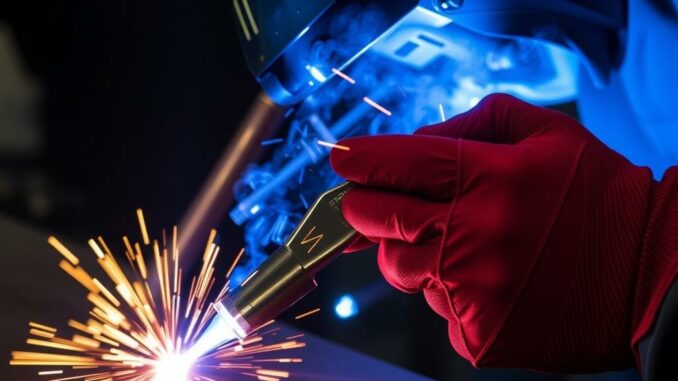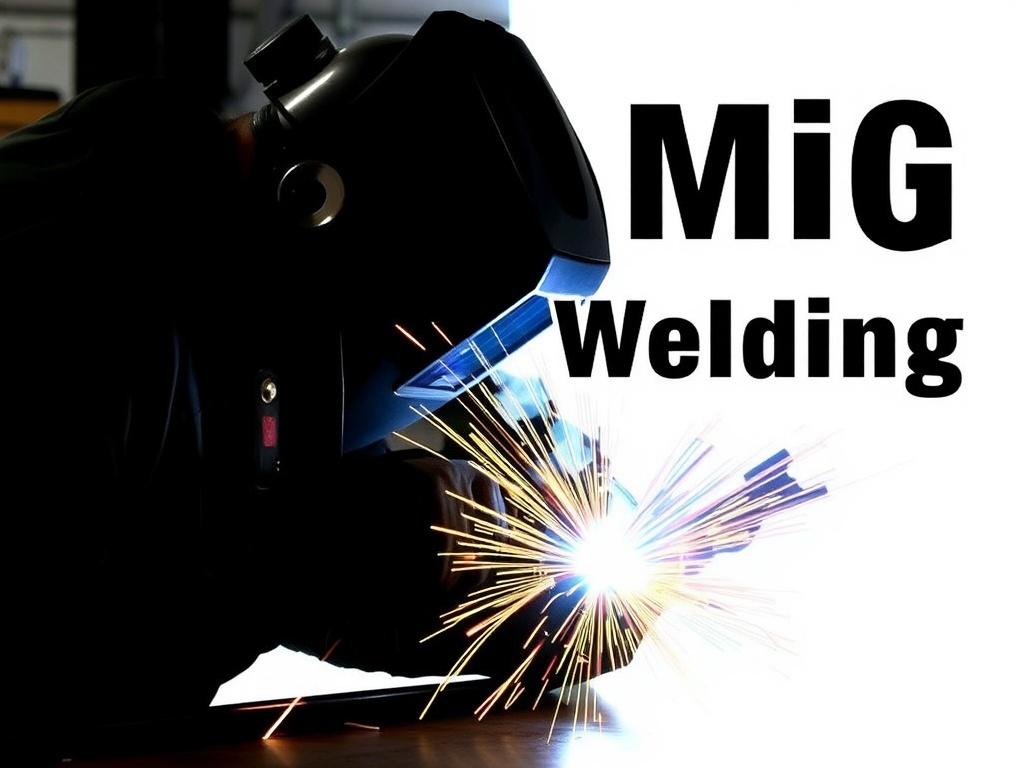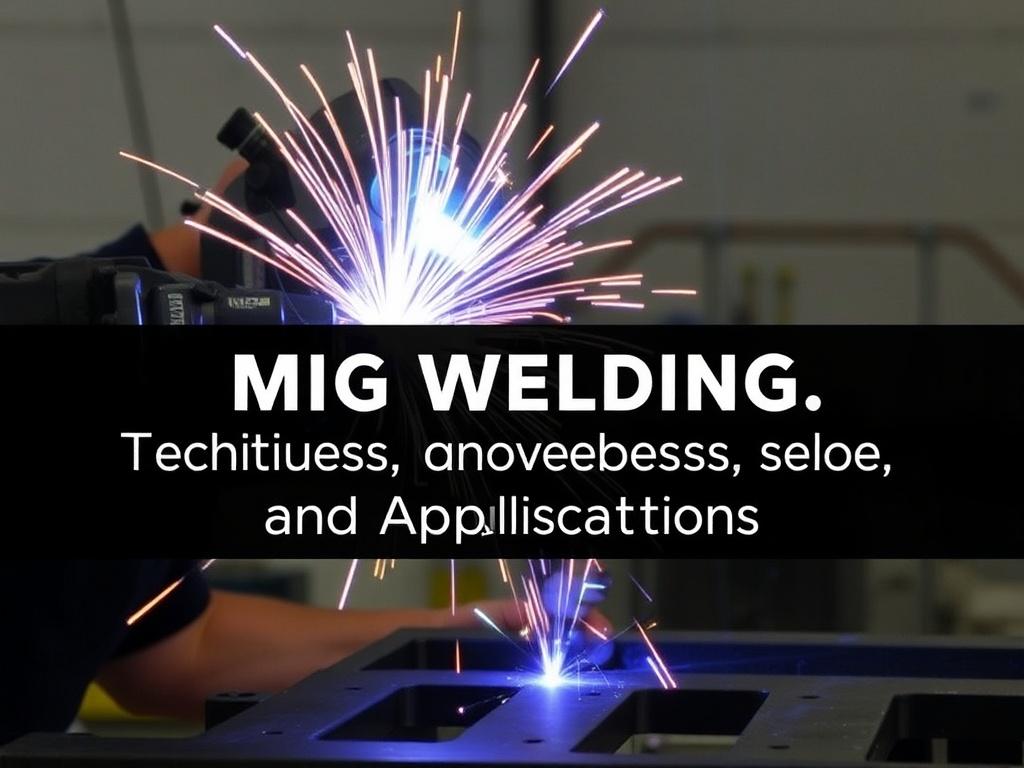
MIG welding, or Metal Inert Gas welding, is one of the most widely used welding processes in the manufacturing and repair industry. Whether you’re a professional welder or just starting out, understanding MIG welding techniques, advantages, and applications can open doors to countless projects. In this comprehensive article, we will dive deeply into what makes MIG welding such a popular method, explore its various techniques, understand its benefits, and see where it’s best applied.
Throughout this article, you will gain valuable insights into this versatile welding method. We’ll cover everything from the basic principles to detailed tips, comparisons with other welding types, and some practical advice for those looking to get started. So, grab a seat, and let’s dive right in!
What is MIG Welding?
MIG welding, short for Metal Inert Gas welding, is a welding process that uses a continuous wire electrode fed through a welding gun and into the weld pool, joining the base materials. It uses an inert shielding gas, typically argon or a mixture of argon and carbon dioxide, to protect the weld pool from contaminants in the atmosphere.
Unlike some other welding techniques, MIG welding is known for its ease of use and speed. It’s highly efficient, making it an excellent choice for both small-scale projects and larger industrial applications. A key feature is its mechanism—wire is continuously fed from a spool, melting to form the weld joint without requiring frequent stops to replace rods or electrodes.
Because of these features, MIG welding is often considered beginner-friendly while still maintaining the capability to produce professional-grade welds in skilled hands.
The Welding Process Explained
At its core, the MIG welding process relies on an electric arc that melts the wire electrode and the base metals, thus binding them together. The inert gas shields the area, preventing oxidation and other defects. The welding machine controls both the wire feed speed and the electrical current, allowing precise management of the heat input and weld bead characteristics.
Here’s a simplified step-by-step overview of how MIG welding works:
- The welder selects the wire type and shielding gas appropriate for the material to be welded.
- The machine feeds the wire electrode through the welding gun.
- An electric arc forms between the wire and base metal, generating heat.
- The wire melts and joins with the molten base metals, forming a weld pool.
- The shielding gas flows around the arc and weld pool to protect it from contaminants.
- The weld metal solidifies, creating a strong joint as the welder moves along the welding path.
MIG Welding Techniques
Mastering MIG welding techniques is key to achieving strong, clean, and visually appealing welds. Although MIG welding is relatively easy to learn, there are several essential methods and tips to improve your results and adapt to different situations.
1. Proper Gun Angle
The angle at which you hold the MIG gun significantly affects the weld’s quality. Generally, a 10 to 15-degree angle from vertical, in the direction of travel, works best.
A too-steep angle may cause poor penetration, while an angle too flat can lead to shielding gas leakage, resulting in porosity.
2. Travel Speed
Moving the gun too fast causes weak welds from insufficient heat, while moving too slow can create excessive buildup and distortions. Finding the right balance requires practice.
3. Wire Feed Speed
Wire feed speed controls the weld’s volume and deposition rate. Too fast and the wire can create spatter and poor penetration; too slow and you risk a weak weld with shallow fusion.
4. Correct Voltage Settings
The power supply’s voltage determines arc length and stability. Adjusting voltage to suit the material thickness and wire type helps maintain a smooth, stable arc, minimizing defects.
5. Stringer Beads vs. Weaving
Stringer beads are straight, narrow weld beads and are preferred for precise control and best penetration. Weaving involves moving the gun side-to-side and is useful for filling wider joints or creating aesthetically pleasing weld patterns but requires more skill.
6. Using Back-Stepping
Back-stepping is a technique where the welder cuts ahead and then back-fills the weld, helping reduce distortion on thinner metals.
7. Cleaning the Metal Surfaces
Before welding, it’s crucial to remove rust, oil, grease, or paint to ensure clean, defect-free welds. MIG welding doesn’t handle contaminants well, so preparation is critical.
The Advantages of MIG Welding
It’s no surprise that MIG welding is one of the most popular welding processes worldwide. But what exactly makes it stand out? Here are some of the primary advantages:
1. Ease of Use
MIG welding is friendly for beginners because of its semi-automatic nature. The continuous wire feed and stabilized arc reduce the skill barrier compared to processes like stick welding.
2. High Welding Speed
The continuous wire feed lets welders complete projects faster, boosting productivity. This speed advantage makes MIG welding ideal for production environments.
3. Clean Welds with Minimal Spatter
Because of the shielding gas and continuous feed, MIG welding produces cleaner welds with less splatter. This reduces post-weld cleanup time and improves aesthetics.
4. Versatility
MIG welding works on a broad range of metals, including carbon steel, stainless steel, aluminum, and more. This flexibility means the process can serve many industries and applications.
5. Strong, Reliable Welds
When done correctly, MIG welding produces welds with excellent mechanical properties, capable of withstanding significant stress and environmental exposure.
6. Reduced Fatigue
The semi-automatic process means operators don’t have to constantly restart welds or change electrodes, reducing fatigue over long shifts.
Applications of MIG Welding

MIG welding plays an essential role in many industries, thanks to its adaptability and efficiency. Let’s explore some common applications where MIG welding shines.
1. Automotive Industry
MIG welding is extensively used in automobile manufacturing and repair. It bonds steel panels, frames, and parts quickly, efficiently, and with high quality. Its speed and ability to handle thin metals make it perfect for body and chassis work.
2. Construction and Fabrication
From steel structures to metal furniture and frameworks, MIG welding enables robust and durable construction. Fabricators often rely on MIG welding for building custom metal parts and equipment.
3. Aerospace and Shipbuilding
Although specialized welding methods are sometimes preferred, MIG welding is used for specific tasks that require speed and solid joints, especially on non-critical parts and repairs.
4. Home and DIY Projects
The simplicity and safety of MIG welding make it a favorite among hobbyists and small business owners who work on vehicle restoration, metal art, gardening tools, and more.
5. Manufacturing Industry
Many manufacturing applications require quick, strong welds on assembly lines. MIG welding fits this bill well, supporting high-volume production and consistent results.
Choosing the Right Equipment for MIG Welding
If you’re considering getting into MIG welding, understanding the equipment components is crucial. Here’s a quick look at the essential tools you will need:
| Equipment | Description | Purpose |
|---|---|---|
| MIG Welder | The main power unit that controls voltage and wire feed speed. | Generates the electric arc and feeds the wire electrode. |
| Welding Gun | Handheld device where wire exits and arc is formed. | Delivers wire and shielding gas to the weld site. |
| Wire Spool | Spool containing the consumable wire electrode. | Automatically feeds wire during welding. |
| Shielding Gas Cylinder | Contains inert gas such as Argon or CO2 mix. | Protects weld pool from atmospheric contamination. |
| Regulator and Flowmeter | Controls gas pressure and flow rate. | Ensures consistent gas shielding. |
| Protective Gear | Helmet, gloves, apron, and safety glasses. | Protects operator from sparks, UV radiation, and fumes. |
Types of Metal and Wire Used in MIG Welding
The choice of materials plays an important role in MIG welding success. The wire and base metal must be compatible to ensure strong welds.
Wire Types
- Solid Wire: Most common, good for clean materials and thin metals.
- Flux-Cored Wire: Tubular wire filled with flux, useful for outdoors or dirty metals.
- Aluminum Wire: Requires specific equipment and shielding gas; soft and lightweight.
- Stainless Steel Wire: Used for corrosive environments and aesthetic parts.
Common Base Metals
- Carbon Steel: Most widely welded metal, easy to work with.
- Stainless Steel: Requires specific gas and techniques due to heat sensitivity.
- Aluminum: Lightweight alternative needing different parameters.
- Other Metals: MIG welding can also be adapted for copper, nickel alloys, and more with specialized setups.
Safety Tips for MIG Welding
<pWhile MIG welding is safer than some processes, it still poses risks including electric shock, burns, UV radiation, and inhalation of fumes. Here are essential safety practices:
- Wear a welding helmet with appropriate shade to protect your eyes.
- Use flame-resistant clothing, gloves, and closed shoes to protect skin and prevent burns.
- Ensure proper ventilation to avoid inhaling toxic fumes.
- Keep your work area clean and free of flammable materials.
- Handle gas cylinders properly and check for leaks before starting.
- Follow equipment manuals and electrical safety guidelines.
Common Challenges and How to Overcome Them
Even experienced welders can face issues with MIG welding. Luckily, most problems are solvable once you understand their causes:
| Problem | Possible Cause | Solution |
|---|---|---|
| Porosity (Holes in Weld) | Contaminated surface, improper gas flow, or gas mixture | Clean metal, check gas flow rate, use correct shielding gas |
| Spatter | Incorrect voltage or wire feed speed | Adjust settings carefully, use anti-spatter spray |
| Poor Penetration | Too fast travel speed or low voltage | Slow down travel speed, increase voltage |
| Burn-Through | Too high heat on thin metal | Lower voltage, use heat sinks or backing plate |
| Inconsistent Arc | Dirty contact tip, wrong settings | Clean/replace tip, calibrate machine |
Learning MIG Welding: Tips for Beginners
If you’re new to MIG welding, don’t worry! Starting with MIG welding is one of the best choices due to its forgiving nature and smooth learning curve. Here are some tips to get going:
- Practice on scrap metal: Begin by welding on inexpensive metal pieces to get a feel for the technique.
- Watch tutorials and videos: Visual aids can bridge gaps in understanding better than texts alone.
- Take a welding class: Hands-on guidance from professionals accelerates skill development and safety awareness.
- Experiment with settings: Learn how voltage and wire feed influence weld quality to develop fine control.
- Maintain your equipment: Regular cleaning and checks ensure consistent performance.
- Be patient and persistent: Welding is an art and science—mastery takes time but is rewarding.
Comparing MIG Welding to Other Welding Methods
With several welding processes available, understanding how MIG welding stacks up is important, especially if choosing the right process for your needs.
| Welding Process | Ease of Use | Speed | Material Thickness | Applications | Other Notes |
|---|---|---|---|---|---|
| MIG Welding | Easy | Fast | Thin to medium thick | Automotive, fabrication, general purpose | Requires shielding gas |
| TIG Welding | Hard | Slow | Thin and precise welds | Aerospace, artistic, stainless steel, aluminum | Very precise, requires skill |
| Stick Welding (SMAW) | Medium | Moderate | Thicker metals | Outdoor, construction, repair | No shielding gas needed |
| Flux-Cored Arc Welding (FCAW) | Medium | Fast | Medium to thick metals | Outdoor, heavy equipment, construction | No external gas needed for self-shielded wire |
Future Trends in MIG Welding

Welding technology continues to evolve, and MIG welding is no exception. Here are some emerging trends that are shaping the future:
- Automation and Robotics: MIG welding is increasingly incorporated in robotic arms for high-volume, repeatable manufacturing processes.
- Advanced Wire and Gas Compositions: New alloys and gas mixes are improving weld quality and environmental impact.
- Improved Portability: Lightweight, compact MIG welders allow greater flexibility for fieldwork.
- Smart Welding Machines: Digital controls, feedback loops, and AI assist to optimize settings and reduce errors.
Conclusion

MIG welding stands out as a versatile, efficient, and user-friendly welding process. From beginners in home garages to professionals in advanced factories, MIG welding opens up a world of possibilities in metal joining. Its wide range of applications, combined with rapid learning and strong weld quality, make it an essential skill for many industries and crafts.
By mastering MIG welding techniques, understanding the equipment, and applying best practices, you can unlock impressive results that last. Whether you aim to repair, fabricate, or create, MIG welding is a powerful tool to add to your skillset.
Remember, safety first, practice often, and keep exploring new welding methods as technologies evolve. Happy welding!
